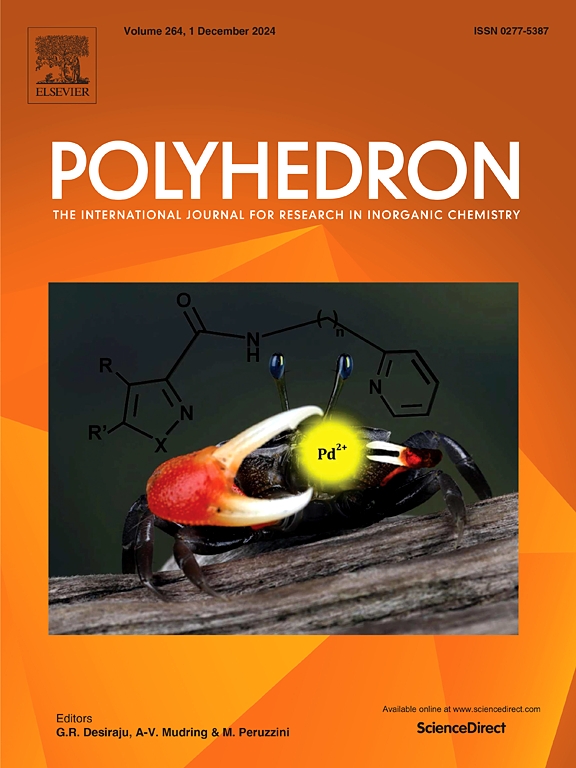Computational study of the optoelectronic and photovoltaic properties of arene-functionalized chromium complexes as sensitizers for enhancing DSSC performance
IF 2.4
3区 化学
Q2 CHEMISTRY, INORGANIC & NUCLEAR
引用次数: 0
Abstract
This study explores how changes to the arene ligands in the half-sandwich chromium complex (η6-C6H5X)Cr(CO)3 influence its performance. A theoretical study was conducted on a series of modified chromium half-sandwich complexes to evaluate their potential as sensitizers in Dye-Sensitized Solar Cells (DSSCs), utilizing density functional theory (DFT) and time-dependent (TD-DFT). The research examined seven arene derivatives, evaluating the photoelectrical properties of the corresponding complexes. Calculations were performed at the B3LYP/6-31G/SDD level to determine the ground and excited state properties of the isolated dyes. Essential parameters, such as light harvesting efficiency (LHE), electron injection driving force (ΔGinj), regeneration driving force (ΔGreg), open-circuit voltage (VOC), and maximum absorption wavelength (λmax), were carefully analyzed. The findings suggest that the DA, DB, DD, DF, and DG complexes have strong potential as sensitizers in DSSCs. This study highlights the valuable role of theoretical methods in predicting and guiding the design of new dyes for solar cell applications.

芳烃功能化铬配合物增强DSSC性能的光电和光伏性能的计算研究
本研究探讨了半夹层铬配合物(η6-C6H5X)Cr(CO)3中芳烃配体的变化对其性能的影响。利用密度泛函理论(DFT)和时间依赖理论(TD-DFT)对一系列改性铬半夹层配合物进行了理论研究,以评估它们作为染料敏化太阳能电池(DSSCs)敏化剂的潜力。本研究考察了七种芳烃衍生物,评价了相应配合物的光电性能。在B3LYP/6-31G/SDD水平上进行计算,以确定分离染料的基态和激发态性质。对光收集效率(LHE)、电子注入驱动力(ΔGinj)、再生驱动力(ΔGreg)、开路电压(VOC)、最大吸收波长(λmax)等关键参数进行了详细分析。研究结果表明,DA、DB、DD、DF和DG复合物在DSSCs中具有很强的致敏性。这项研究突出了理论方法在预测和指导太阳能电池应用的新染料设计中的重要作用。
本文章由计算机程序翻译,如有差异,请以英文原文为准。
求助全文
约1分钟内获得全文
求助全文
来源期刊

Polyhedron
化学-晶体学
CiteScore
4.90
自引率
7.70%
发文量
515
审稿时长
2 months
期刊介绍:
Polyhedron publishes original, fundamental, experimental and theoretical work of the highest quality in all the major areas of inorganic chemistry. This includes synthetic chemistry, coordination chemistry, organometallic chemistry, bioinorganic chemistry, and solid-state and materials chemistry.
Papers should be significant pieces of work, and all new compounds must be appropriately characterized. The inclusion of single-crystal X-ray structural data is strongly encouraged, but papers reporting only the X-ray structure determination of a single compound will usually not be considered. Papers on solid-state or materials chemistry will be expected to have a significant molecular chemistry component (such as the synthesis and characterization of the molecular precursors and/or a systematic study of the use of different precursors or reaction conditions) or demonstrate a cutting-edge application (for example inorganic materials for energy applications). Papers dealing only with stability constants are not considered.
 求助内容:
求助内容: 应助结果提醒方式:
应助结果提醒方式:


